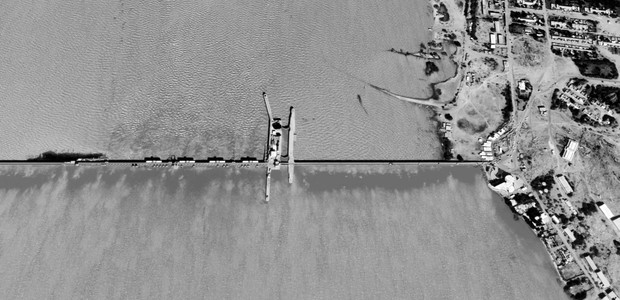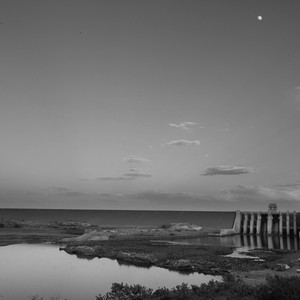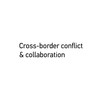The Niles #15The dam issue

Be it to improve irrigation, manage floods and droughts or generate energy, dams have played a significant role in humanity’s progress.
But the dam-building development model also has its flaws. And with the impacts of climate change starting to threaten livelihoods, many argue it’s time to protect and even restore our free-flowing rivers the world over.
The development-conservation-dilemma is hard to address, particularly for transboundary rivers such as the Nile. Saving the shared resource while providing for the Nile Basin’s growing populations requires transboundary cooperation.
The Niles journalists, who hail from across the Eastern Nile Basin, have tackled the highly sensitive dam topic and have no easy answers. But self-aware that they all are in the same boat, they agree that it is time to start rowing the same way.
Map
The Niles 15: Eastern Nile Basin dams
A map of the existing and planned Eastern Nile Basin dams featured in The Niles, Issue 15.
Editorial
The dam conundrum: to build or not to build?
MiCT The Niles | Berlin, Germany
The ancient technology of dams has fuelled human progress. Yet countries building and managing dams, especially in transboundary river systems like the Nile, face complex and difficult challenges.
Interview
Why dams matter
Waakhe Simon Wudu | Juba, South Sudan
Nile Basin countries are in a race for time as growing populations require significant amounts of electric power. Dams are a solution but also pose new challenges.
The cascade effect
Sharing information, knowledge and experience
MiCT The Niles | Berlin, Germany
The interdependency of dams in a river system demands coordinated operation, so all dams have an optimal configuration that, in the interplay with all others, minimises risks and maximises mutual benefits for all riparian states.
Comment
How to report on dams without having seen one
Rehab Abdalmohsen | Cairo, Egypt
Reporting on dams in the Nile Basin is a tricky endeavour – even more so if you’ve never seen one.
Infographic
Dam safety and coordinated operation
MiCT The Niles | Entebbe, Uganda
Why the coordinated operation of transboundary cascade dams is vital.
Risks, actions & benefits
Do dams cause more problems than they solve?
MiCT The Niles | Berlin, Germany
All across the Nile Basin, dams generate power, store drinking and irrigation water, as well as preventing flooding and creating spaces to relax. On the downside, dams, especially poorly maintained structures, can endanger local people, especially in the context of a rapidly changing climate.
Comment
The roadmap towards a dam in South Sudan
Francis Wani | Juba, South Sudan
Many people are thinking about introducing dams to South Sudan – but a systematic approach is needed before becoming a reality in the country.
Review
Can South Sudan relaunch its Fula Dam project?
Nema Juma | Juba, South Sudan
South Sudan’s plans for the Fula Dam have long been in place, but a multitude of obstacles have halted the project.
Overview
Sudan’s dams
Alaa Eliass & Essameldin Mohamed | Khartoum, Sudan
There are six major dams along the Nile in Sudan, all built at different times for different purposes.
Investigation
The White Dam: a tale of big ambitions and big problems
Elzahraa Jadallah | Khartoum, Sudan
In 2017, Sudan completed the Upper Atbara and Setit hydroelectric project, bringing the country closer toward its goal to increase hydroelectric power generation from 1,500 to 2,000 megawatts by 2020. The years of planning and construction tell a tale of big ambitions and big problems.
Sennar Dam
A dam, a scheme – but water sufficiency remains a pipe dream
Alaa Eliass, Elfatih Mohammed & Mohamed Hilali | Khartoum, Sudan
Just 300 kilometres upstream of Sudan’s capital Khartoum, the Sennar dam is situated on the Blue Nile. Its reservoir stores water for irrigation, and it also provides hydropower.
Interview
“I don’t think the dam has a big effect”
Alaa Eliass | Khartoum, Sudan
Hatim Abdelhadi, a 30-year-old lawyer in Sennar, talks about how the Sennar Dam changes the lives of those living alongside it.
Review
Choke Mountain sediments stifle downstream reservoirs
Dagim Terefe | Addis Ababa, Ethiopia
Growing populations and their needs put pressure on the Choke Mountain ecosystem — and the consequences reach as far downstream as Egypt.
Photostory
‘The Dams of Welfare’
Asmaa Gamal | Cairo, Egypt
The city of El Qanater El Khayreya emerged after a dam was built and has since become a magnet for local and foreign tourists alike.
Review
Do we need a framework for dams?
Waakhe Simon Wudu | Juba, South Sudan
The Eastern Nile Technical Regional Office (ENTRO) is drawing up a coordination framework for dams in the region, aiming to ease conflicts about dams and water supply in the future.






